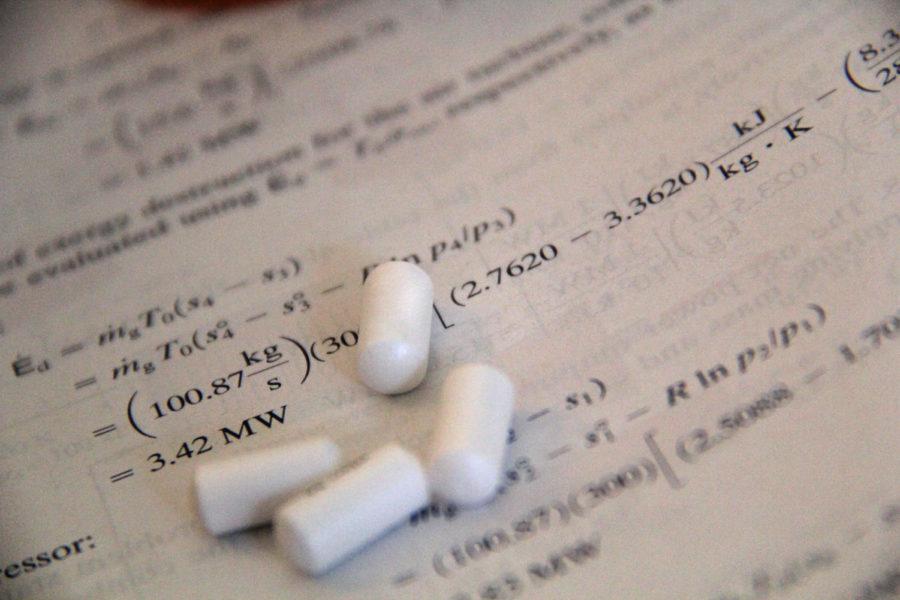Adderall misuse: a persistent problem on college campuses
Students begin to seek alternative ways to help promote studying. Some students turn to prescription drugs that they are not assigned to take.
May 3, 2019
Some students go to extraordinary lengths to try to make the grade during finals week. One way some do is by using the prescription drug Adderall, generally used to treat Attention Deficit/Hyperactivity Disorder, or ADHD.
The global average of the proportion of the world diagnosed with ADHD is 2.8 percent of all people. However data from the Center for Disease Control (CDC) indicates rates are higher among other subgroups, including adolescents and cismales.
Roughly two-thirds of those diagnosed with ADHD in the United States are prescribed Adderall or other stimulant prescription drugs to improve focus, according to the CDC. A 2008 study found 16 to 29 percent of students prescribed Adderall were asked by peers to either give, sell or trade their pills.
That same study found students who use stimulants such as Adderall without a prescription are more likely to use other drugs, and more likely to be white, male and affiliated with a fraternity.
A student at Iowa State who identified himself only as Michael said he has prescriptions for Adderall and Vyvanse, another drug prescribed to treat ADHD.
“I’m still wired from all my [Adderall],” Michael said. “I can’t get anything done without it.”
Using prescription drugs other than how directed to by a physician, including taking one’s own drugs other than how prescribed, can lead to adverse effects.
Stimulants such as Adderall can have the side of effect of contributing to depression and other mental health issues, and psychosis among those taking the drug have been reported.
Furthermore, stimulants including Adderall have the side effect of increasing heart rate and blood pressure. A 15-year-old male was reported in a 2005 journal of having had a heart attack as a result of taking two 20 mg tablets of Adderall. The individual had restarted his medication after stopping without notifying his physician.
The majority of those taken to the emergency room with adverse side-effects from Adderall involved the individual having also consumed alcohol.
Among those diagnosed with ADHD and actually prescribed the drugs, abuse still occurs. The main reason for doing so is to enhance the ability to study, according to a 2009 survey.
Some students have self-reported faking the symptoms of ADHD in an attempt to get a prescription for Adderall or other drugs to help them study.
A 2008 experiment found 93 percent of undergraduate psychology students were able to fake the symptoms of the disease in order to receive a positive diagnosis.
Colleges and universities are aware of the abuse of prescription drugs to try to get an advantage in studying for exams. In 2012, Duke University implemented a policy banning the use of prescription drugs by those not prescribed them for academic purposes.
“The unauthorized use of prescription medication to enhance academic performance has been added to the definition of Cheating,” Duke University said in their updated handbook at the time.
Adderall and other stimulants used to treat ADHD do have the effect of increasing focus. A 2012 journal article reported a single dose of one drug had the effect of improving the ability of healthy volunteers to detect performance errors.
Nevertheless, it remains unclear whether stimulant medication impacts healthy individuals the same way as it does those with ADHD. It is possible the enhanced ability in healthy individuals, including students who are abusing the drug, comes from placebo effects.
Roughly three quarters of students who abuse stimulant drugs such as Adderall report doing so to help them stay awake and focus before an exam. However, the drug does not make students smarter, it simply helps them focus and stay awake. Coffee remains a safer and not illegal way to stay awake to study.







